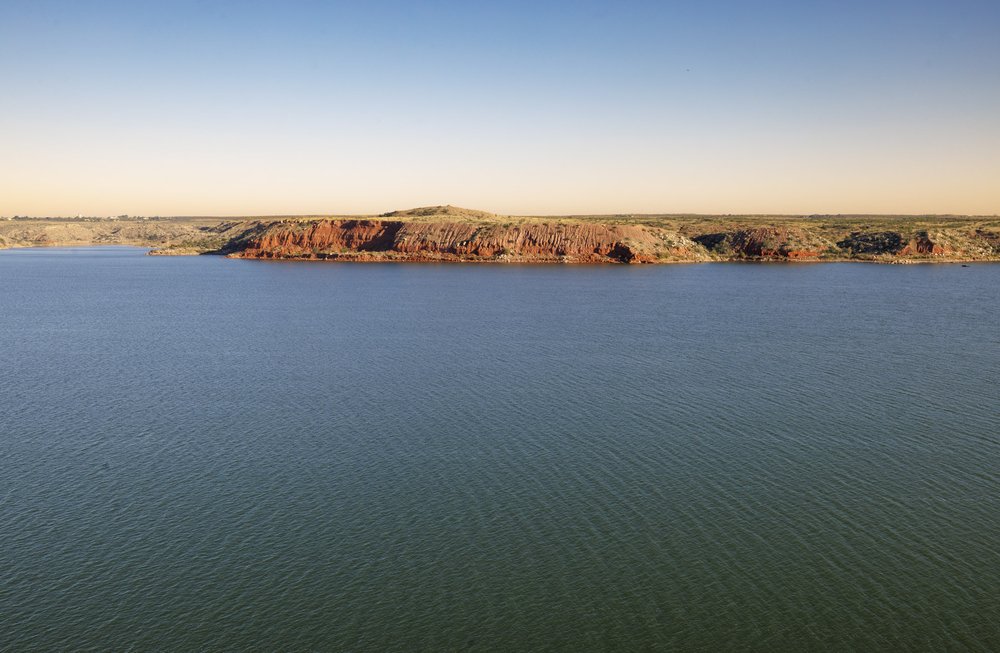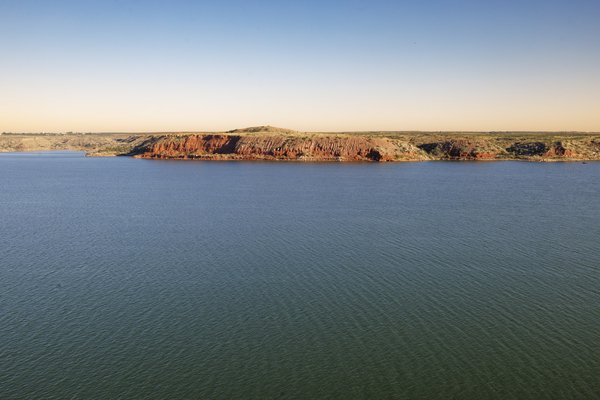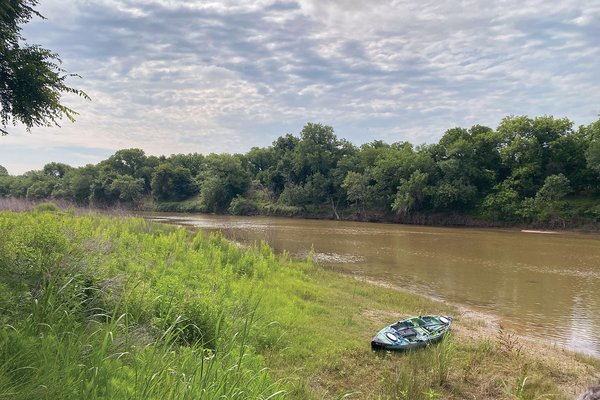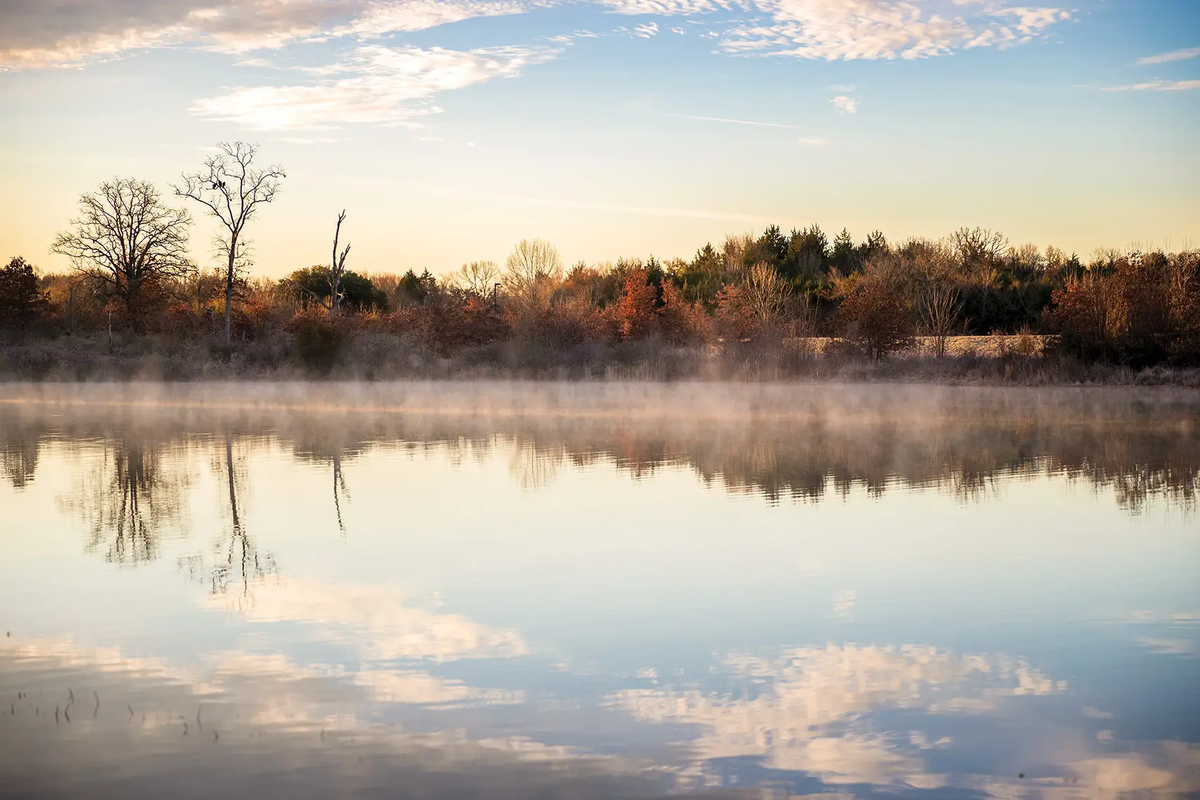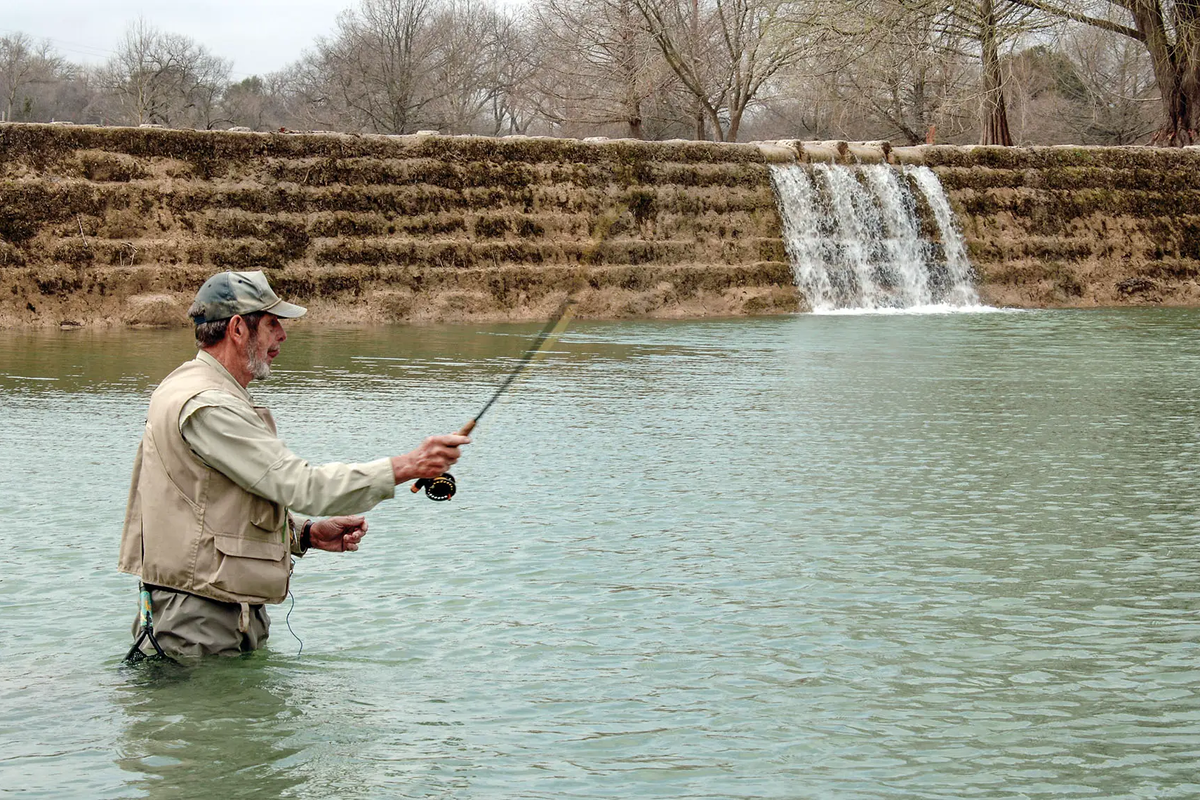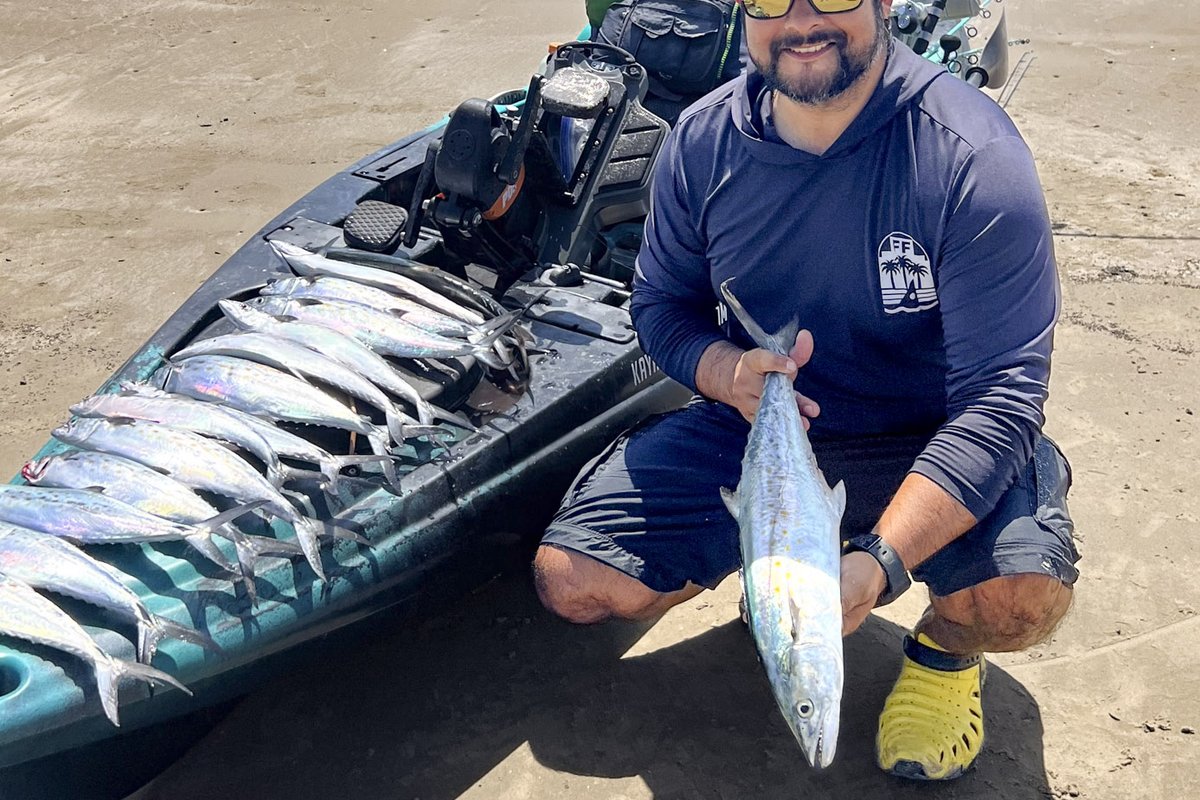Jeff Alexander and his daughter Makenna meet us at the Lake Meredith boat ramp in the wee hours of an April morning. Jeff and Makenna live in the Amarillo area and are regulars at Lake Meredith, the crown jewel of walleye fishing in Texas. Walleye fishing? For the Alexanders, it's been a family tradition on this lake for many years.
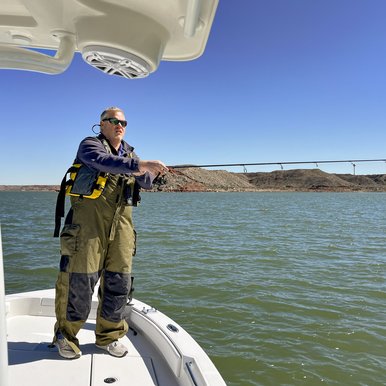
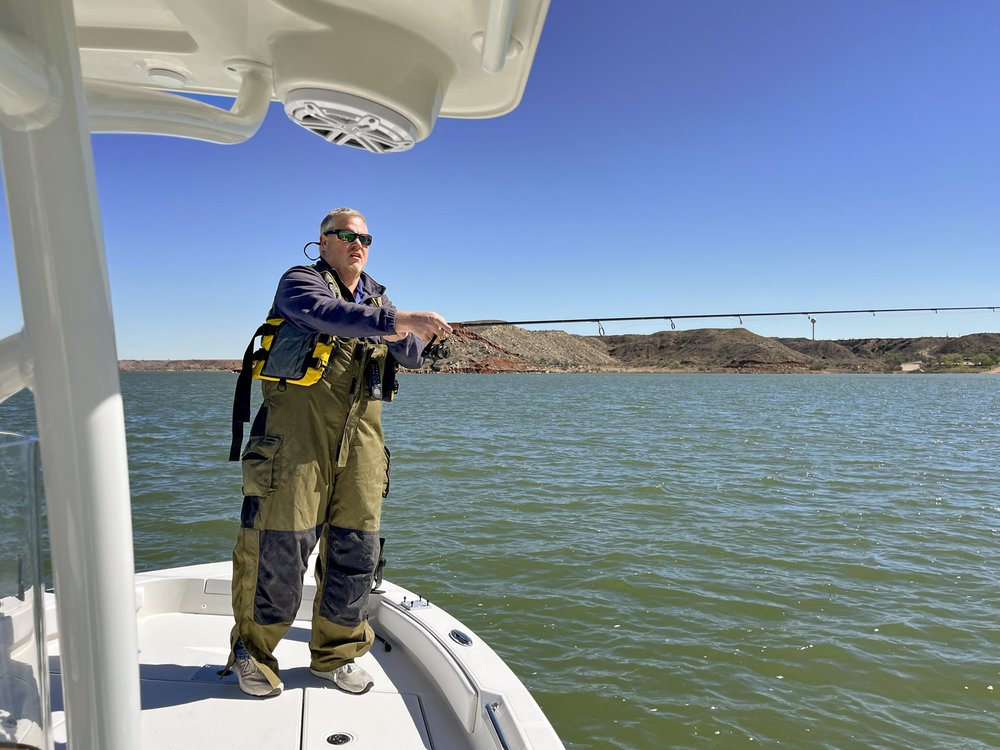
For Jeff and Makenna Alexander, walleye fishing on Lake Meredith has been a family tradition; the author shows off his catch.
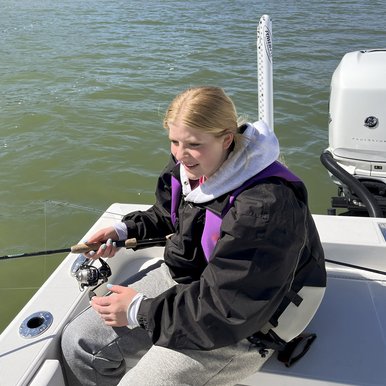
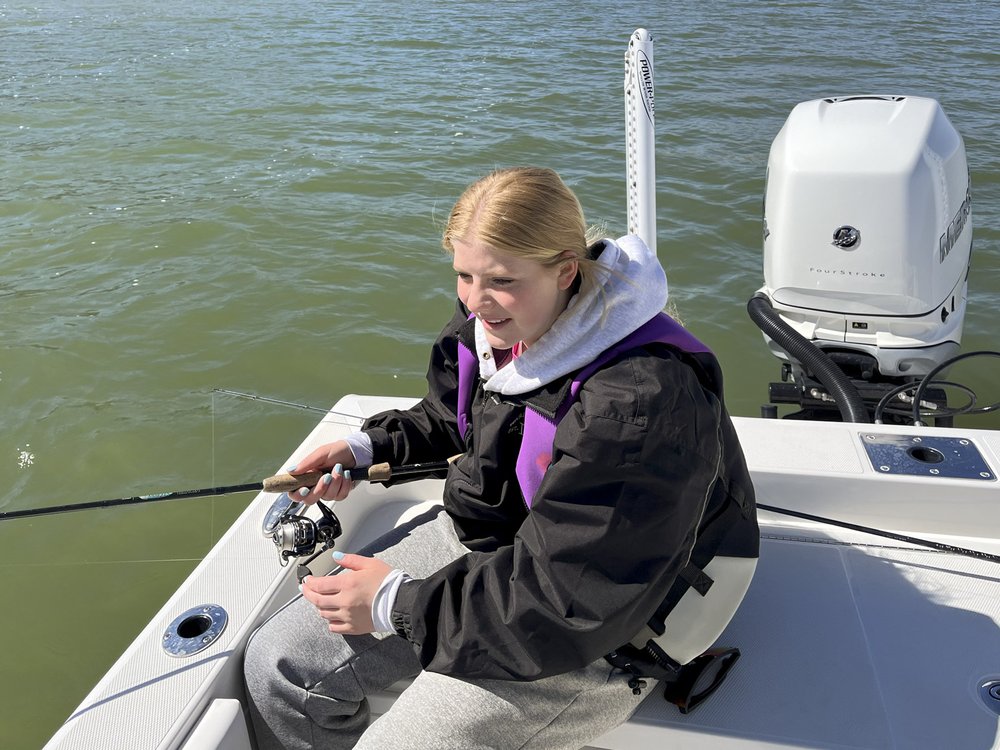
For Jeff and Makenna Alexander, walleye fishing on Lake Meredith has been a family tradition; the author shows off his catch.
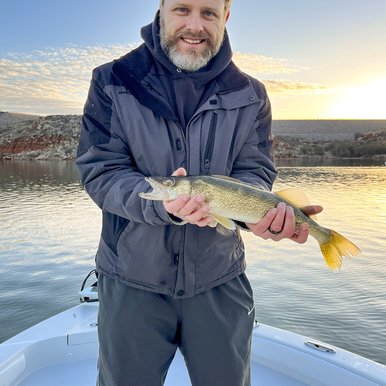
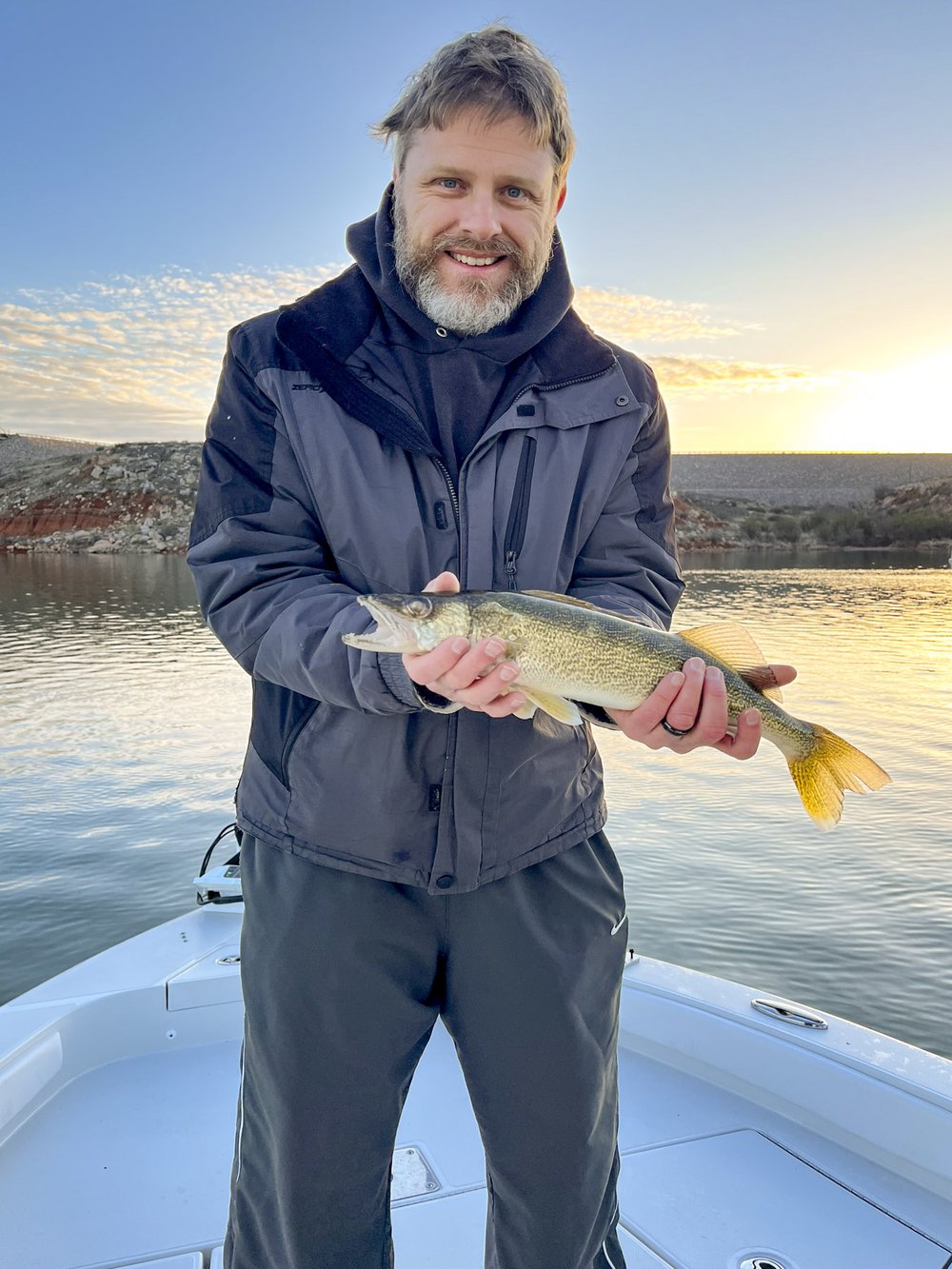
For Jeff and Makenna Alexander, walleye fishing on Lake Meredith has been a family tradition; the author shows off his catch.
For Jeff and Makenna Alexander, walleye fishing on Lake Meredith has been a family tradition; the author shows off his catch.
Walleye In Texas
Walleye were first stocked in Texas in the early 1950s, when 10,000 were released in Lake Amistad. Walleye were subsequently stocked in numerous lakes, but as time progressed, only a handful still received consistent stockings. Lake Meredith received its first stocking of 500,000 fry in 1965, followed by 2 million fry in 1966 to jump-start the population. These stockings and others that followed succeeded in establishing a population that was mostly self-sustaining, which wasn't the case in most of the other lakes that were stocked in the early days.
Lake Meredith was impounded on the Canadian River in 1965 near the small town of Fritch, about a 45-minute drive north from Amarillo. It lies within Lake Meredith National Recreation Area.
The key to Lake Meredith's establishment of walleye populations is water temperature. High summer water temperatures restrict growth and prevent survival throughout most of Texas. However, in northern Texas lakes like Meredith, the species can not only survive but thrive.
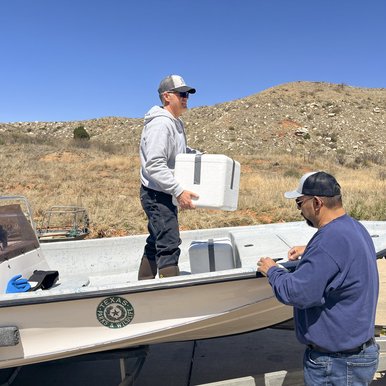
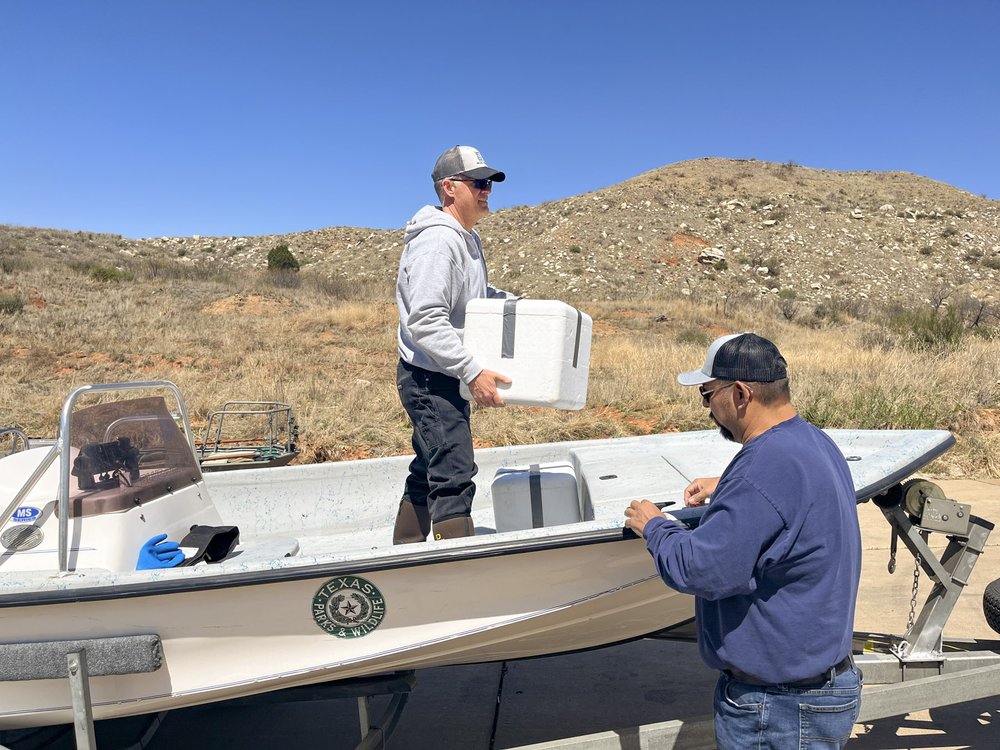
TPWD stocks walleye in Lake Meredith almost every year.
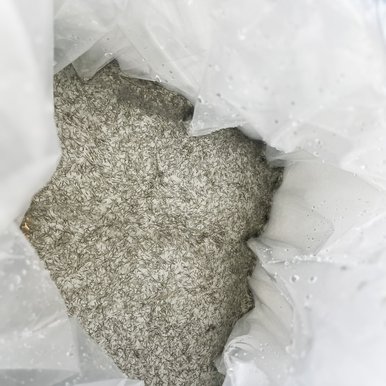
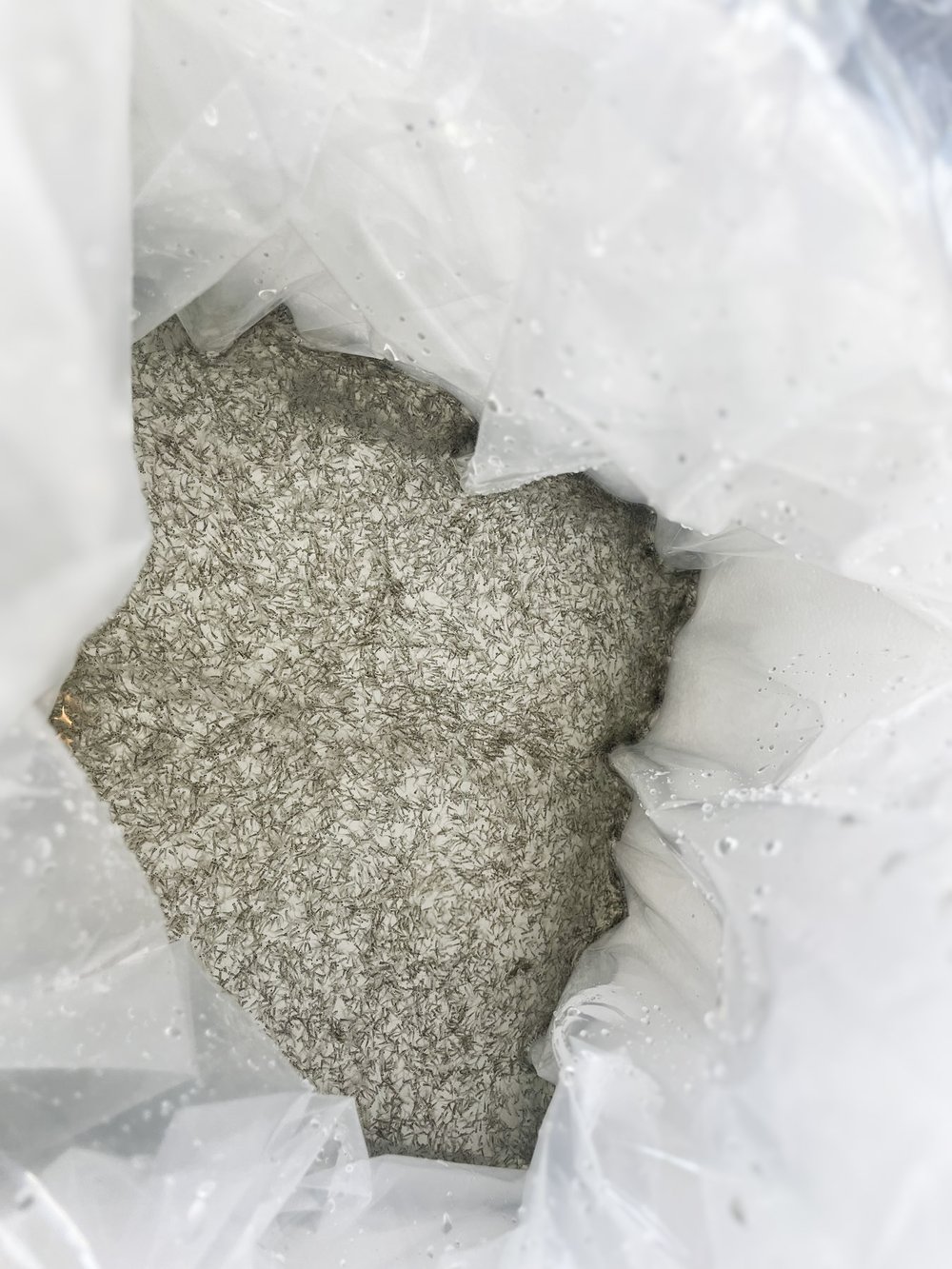
TPWD stocks walleye in Lake Meredith almost every year.
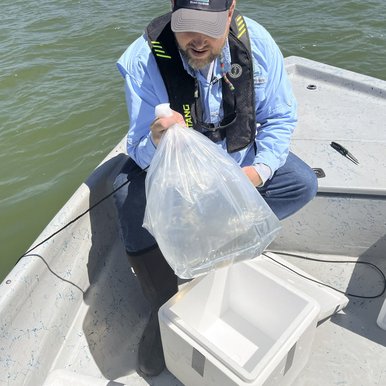
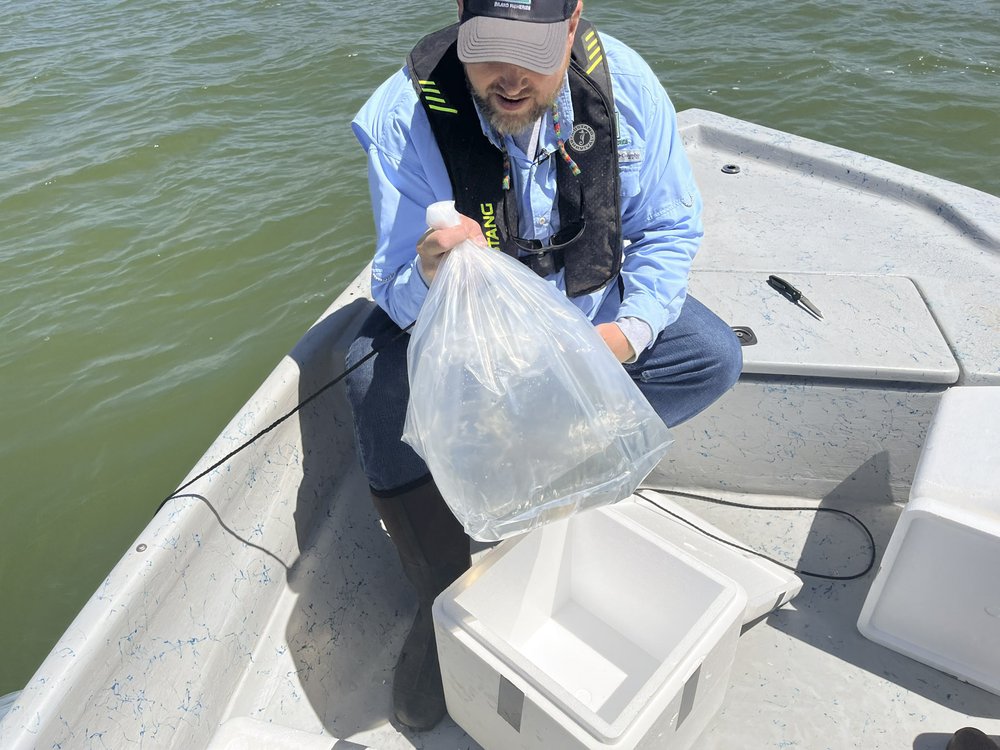
TPWD stocks walleye in Lake Meredith almost every year.
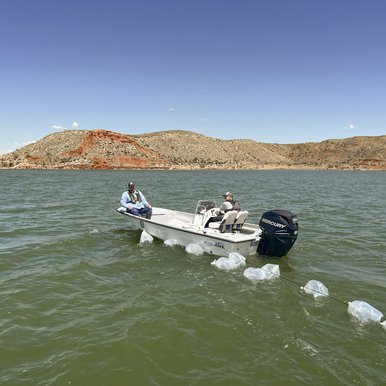
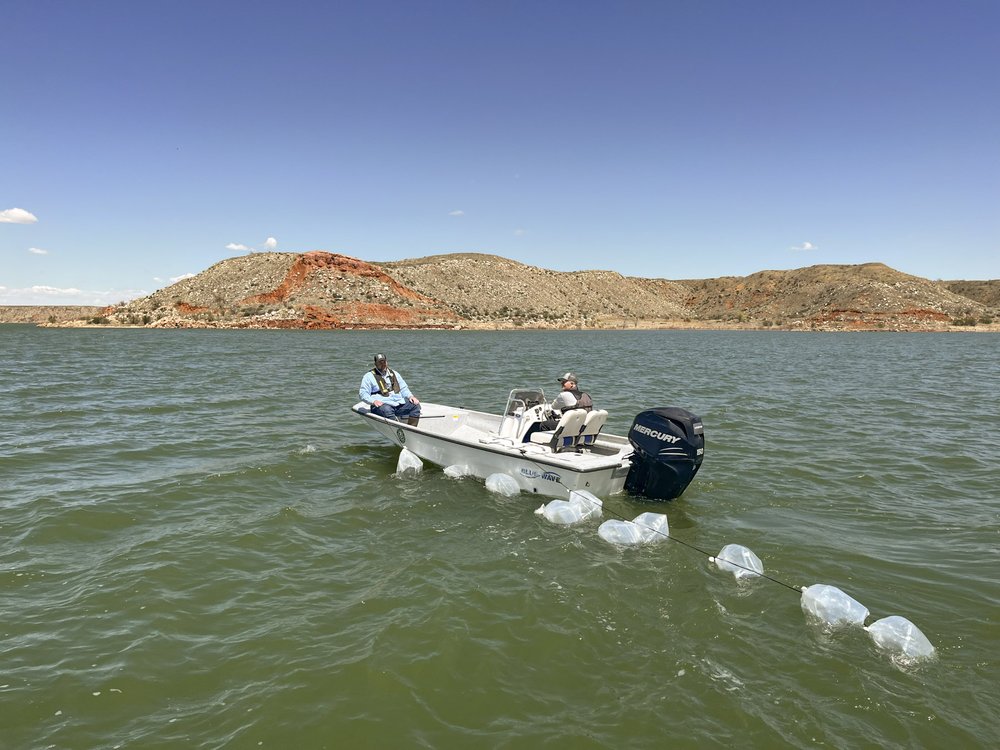
TPWD stocks walleye in Lake Meredith almost every year.
TPWD stocks walleye in Lake Meredith almost every year.
In recent years, TPWD's Inland Fisheries Division has stocked walleye fry in April in Lake Meredith to give the fish population a boost. Texas has a longstanding partnership with the state of Colorado — they give walleye to Texas, and Texas gives them hybrid striped bass. Colorado spawns the walleye in March and transports the eggs to TPWD's Dundee Fish Hatchery near Wichita Falls.
Once the eggs arrive at the hatchery, biologists place them in hatching jars and run water at consistent temperature through the jars. The hatching process takes roughly eight days. Newly hatched fry are collected and bagged up for stocking.
TPWD staff stocked roughly 445,000 of them in April 2024, and numbers can be higher or lower depending on the year. Fisheries biologists at TPWD conduct surveys at Lake Meredith and other water bodies to gauge the health of not only walleye populations but other species of fish as well.
The fry that arrived at Lake Meredith in April 2024 are about five days old. They come in plastic bags full of water, housed in foam boxes. Caleb Huber, TPWD Inland Fisheries Division Amarillo District supervisor, and other fisheries biologists unload them and place them on a boat at the Cedar Canyon boat ramp. The boat speeds away from the shore and into an open part of the lake, for good reason.
“Those fry are just the perfect little snack for other fish, so we try and get them out in the open water to give them more of a fighting chance,” Huber says as he takes the walleye fry across Lake Meredith. “We float the bags of fry first, so what we do is open the boxes, take the bags out and tie them together in a string. We attach the ropes to the boat, and we'll drift around on the water for 30 to 40 minutes or however long it takes for the water in the bags to be equal to the lake temperature.” When the temperature is right, biologists open the bags and release the fish into the water. “Up in the Panhandle with our elevation being on top of the Caprock, our water temperatures are cold enough in the winter that walleye can spawn,” adds Huber. “Lake Meredith provides a good mix of environment and habitat for walleye to survive.”
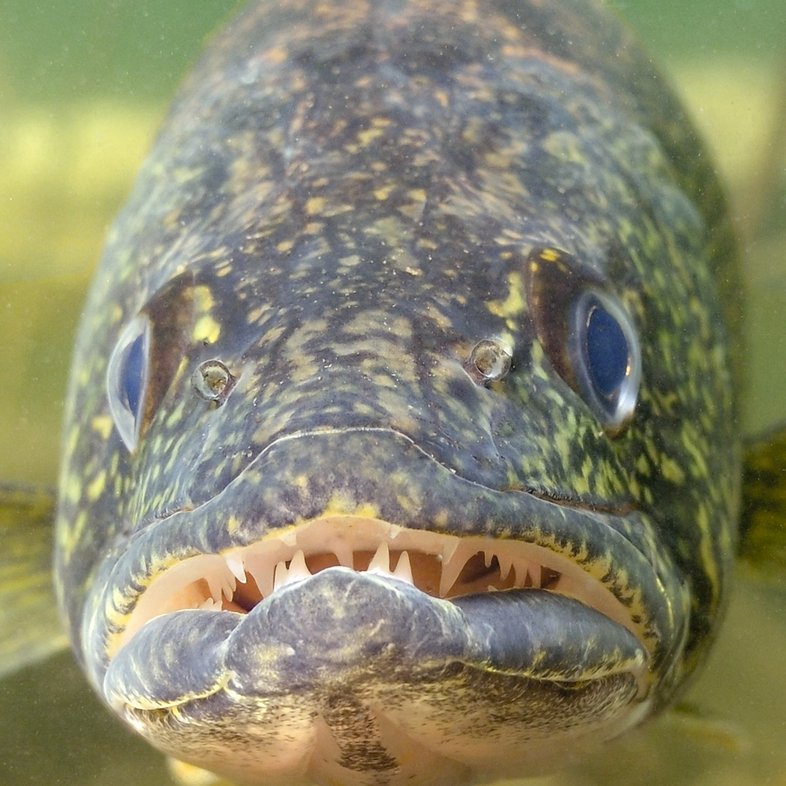
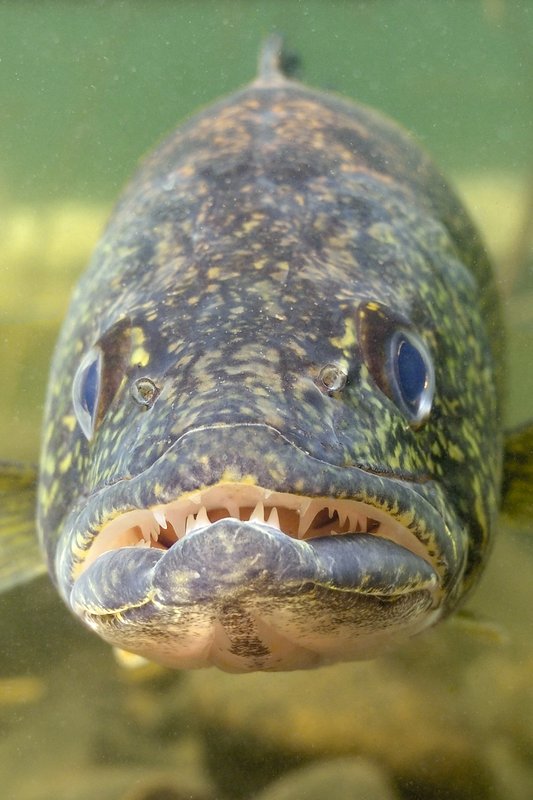
Walleyes have razor-sharp teeth.
Walleyes have razor-sharp teeth.
How to Fish for Walleye
In terms of cover and structure, Lake Meredith is dominated by steep, rocky banks with a few areas of isolated flooded timber and vegetation. Generally speaking, rock ledges, rock piles and steep dropoffs provide cover for game fish like walleye throughout most of the reservoir. Anglers are best served to target these areas of the lake.
Small tackle with 6- to 8-pound test line or smaller is a good place to start for landing these fish in the boat. Walleye can be caught on crankbaits and spinners, but drift-fishing minnows or nightcrawlers on a small jig head may prove most effective. Soft plastic curly tail baits paired with a jig head can also lure those walleyes in.
“A cool thing about walleye is they can be caught with live bait or artificials,” Huber says. “They can also be caught from the bank or a boat, so it's a good species for people who are just wanting to fish in general. It is also a good species for people who want to harvest fish. Walleye are one of the better tasting fish with a very light, mild, flaky meat. They are interesting in that way because some folks come out just to catch and release fish while others are focused more on harvest. The lake provides a lot of opportunity for different types of anglers.”
One effective technique is to drift-fish your jig in roughly 15 feet of water along the shoreline, focusing mainly on rock outcrops, dropoffs and shallow flats. Walleye can be caught year-round, but peak walleye season occurs from April through June. Over 90 percent of the walleye harvested are reeled in during these months.
One thing (actually two things) to keep in mind about the walleye: you'll notice immediately when you handle one that they have extremely sharp teeth. What's less apparent are the razor-sharp edges of their gill flaps. Anglers should keep their hands and fingers clear when removing the hooks, placing the fish in the cooler or returning them to the water.
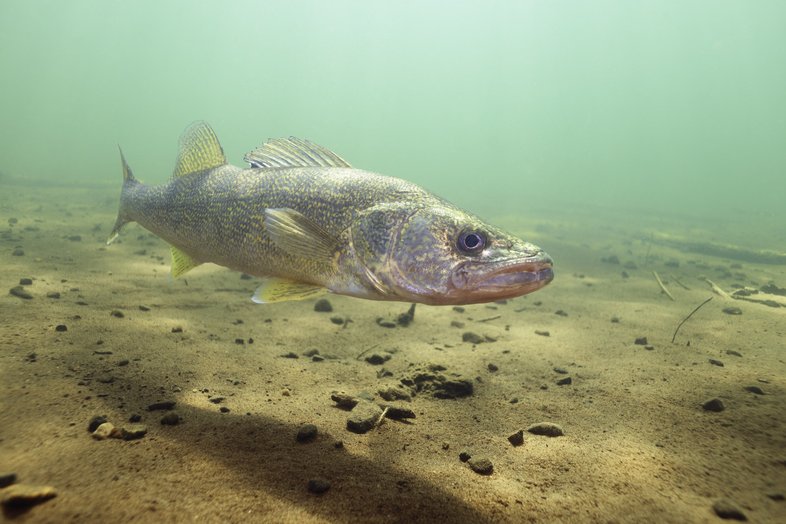
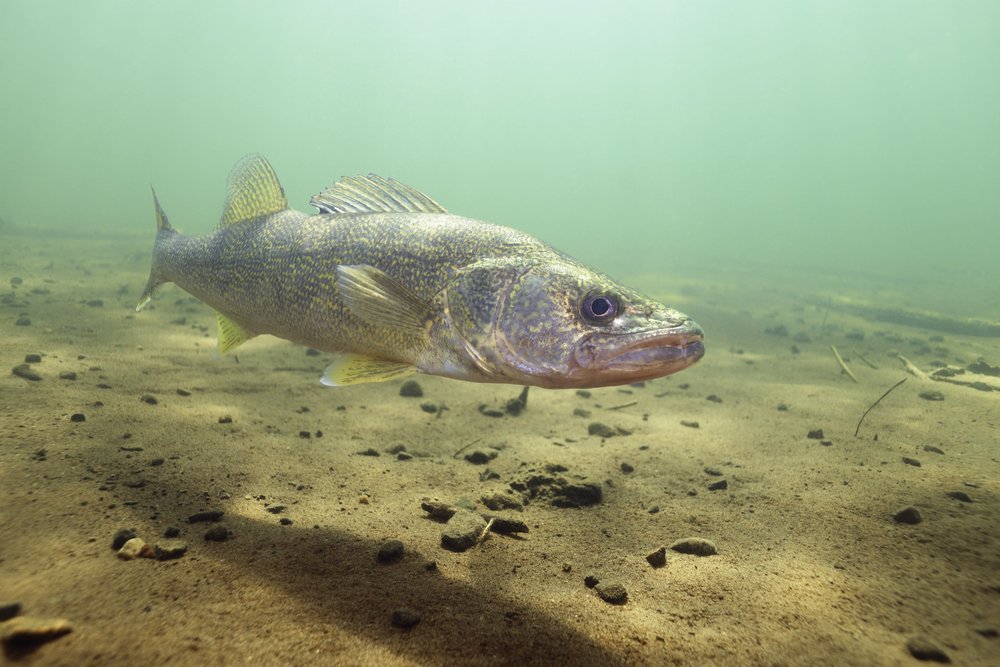
Reeling It In
Meanwhile, back on the water with the Alexanders, we don't catch a record walleye, but we bring some nice fish into the boat. The state record walleye was caught at Lake Meredith on Feb. 26, 1990, when Hank McWilliams Jr. landed a massive 11.88-pound, 31.75-inch walleye.
Ultimately, there's more to a day on the water than just simply catching fish. Whether it's spending valuable time with family and friends or simply seeking out some quiet solitude, fishing can provide those things and more.
“I bring her out here all the time, and we don't always catch a lot of fish,” Jeff Alexander says of Makenna. “The thing is the time together with good smiles and good family time. We have some great pictures and great memories to go home with.”
In addition to time with her dad, Makenna enjoys the calmness of fishing on the water.
“It's nice just because it's quiet,” says Makenna. “Your mind is kind of clear, and all you are thinking about is just sitting here. It's peaceful.” It's safe to say we all left Lake Meredith that day with great memories and an experience we will never forget. Lake Meredith is a unique reservoir with its red canyon walls reflecting across the surface of the water. It's a national recreation area managed by the National Park Service with plenty of boat ramps and some fishing docks for the public to use.
TPWD's Inland Fisheries Division staff work hard to make Lake Meredith a treasured place to go and fish for walleye.
“As an agency, TPWD has managed Lake Meredith for walleye since 1965,” Huber says. “Part of the goal is to provide a unique fishery with most of the fishing opportunities in Texas focused on bass, catfish, crappie and sometimes striped bass depending on where you are at. We can't grow walleye everywhere, so it is a good opportunity, a good place to provide a different fish species for anglers who are looking for a change or to cross another fish off their list.”
It might, in fact, be one of Texas' best-kept fishing secrets.
“I always enjoy having time with my kids, spending time on this body of water catching fish,” Jeff says. “It's a great day.”
